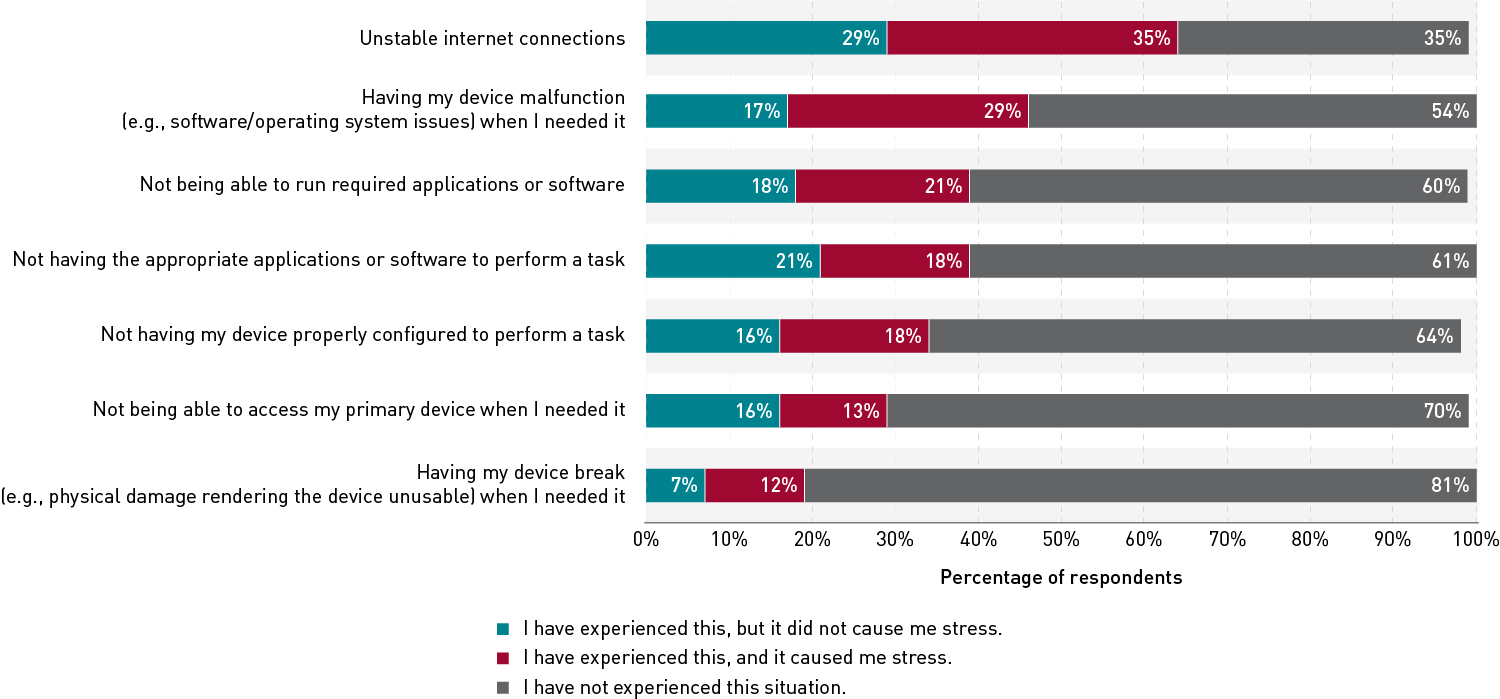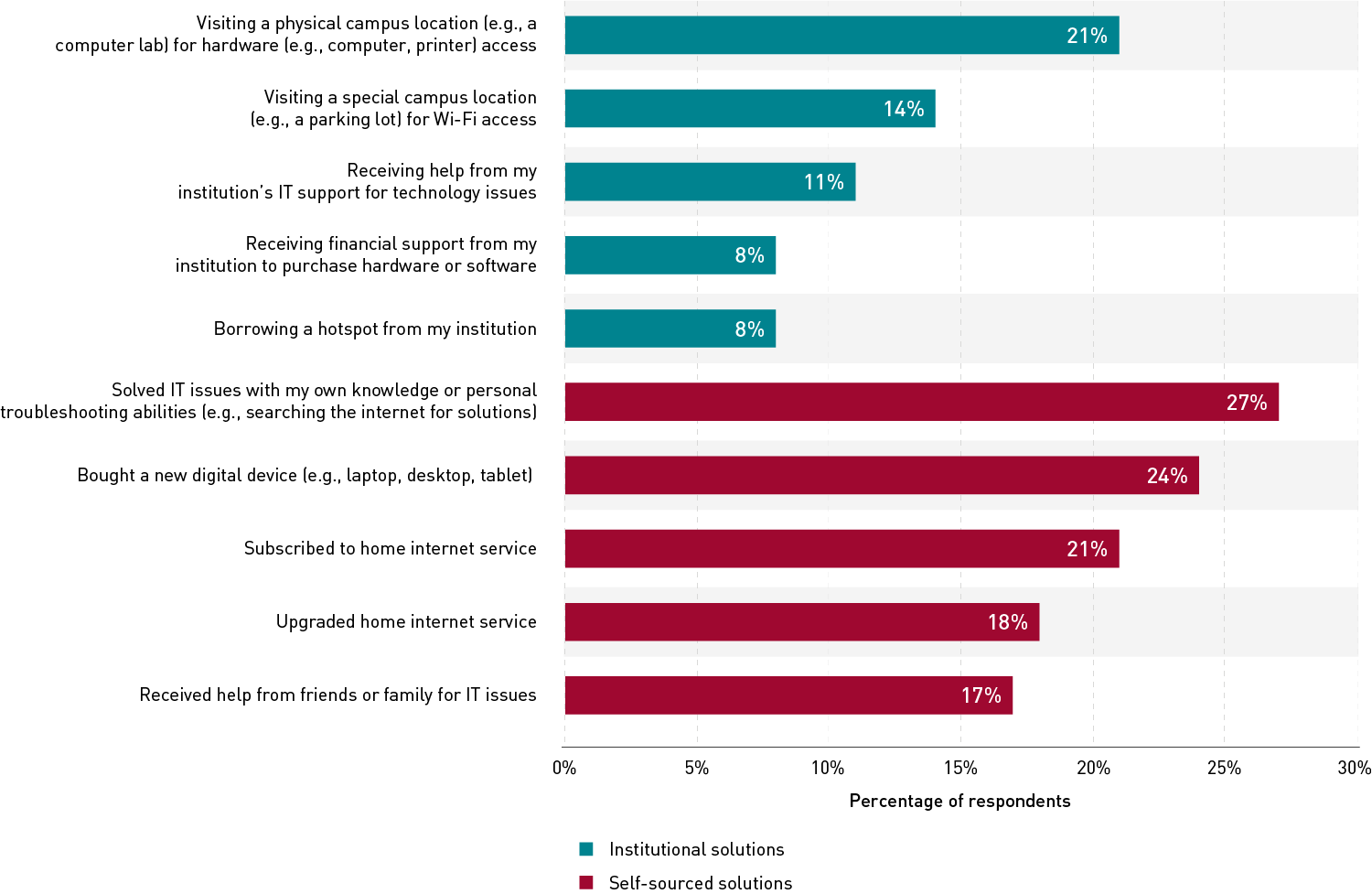Technology Challenges and Solutions
Unreliable technology is (still) stressful. While educational technology can certainly enhance students' experiences, it can present some challenges as well. More than three-quarters (77%) of respondents reported having experienced one or more technology issues (from a provided list; see figure 1) within the past academic year (i.e., 2021–22). More than half (51%) reported that at least one of these issues caused them stress. In keeping with previous research results, unstable internet connections top the list, with 64% of respondents saying that they have experienced this and 35% reporting that it caused them stress. Over a quarter (29%) of respondents said that in the past academic year, their primary device lost connectivity to the internet during a class session, exam, or other synchronous activity. Educators looking for ways to integrate more online instructional components might find that streamlining and supporting technology integration is a key element for success.

Students mostly help themselves with technology issues. A persistent finding in EDUCAUSE research is that students try to solve technology problems on their own, and they typically do their own troubleshooting or ask friends and family for help. In this year's survey, we investigated specific ways in which students use their institution's resources and ways in which they meet their own needs (see figure 2). Visiting a campus for access to hardware (21%) or Wi-Fi (14%) were the two institutional resources selected by the most respondents. This finding is particularly helpful as institutions reconsider teaching modalities and the purposes of their physical spaces. In contrast, more respondents indicated that they were using self-sourced solutions. In general, this is not inherently a bad trend. However, educational technology leaders might use this information to bolster existing support offerings (or improve communication strategies). For example, nearly a quarter of respondents (24%) said that they bought a new digital device, suggesting that institutions might be able to provide more one-to-one device services such as device lending programs.
